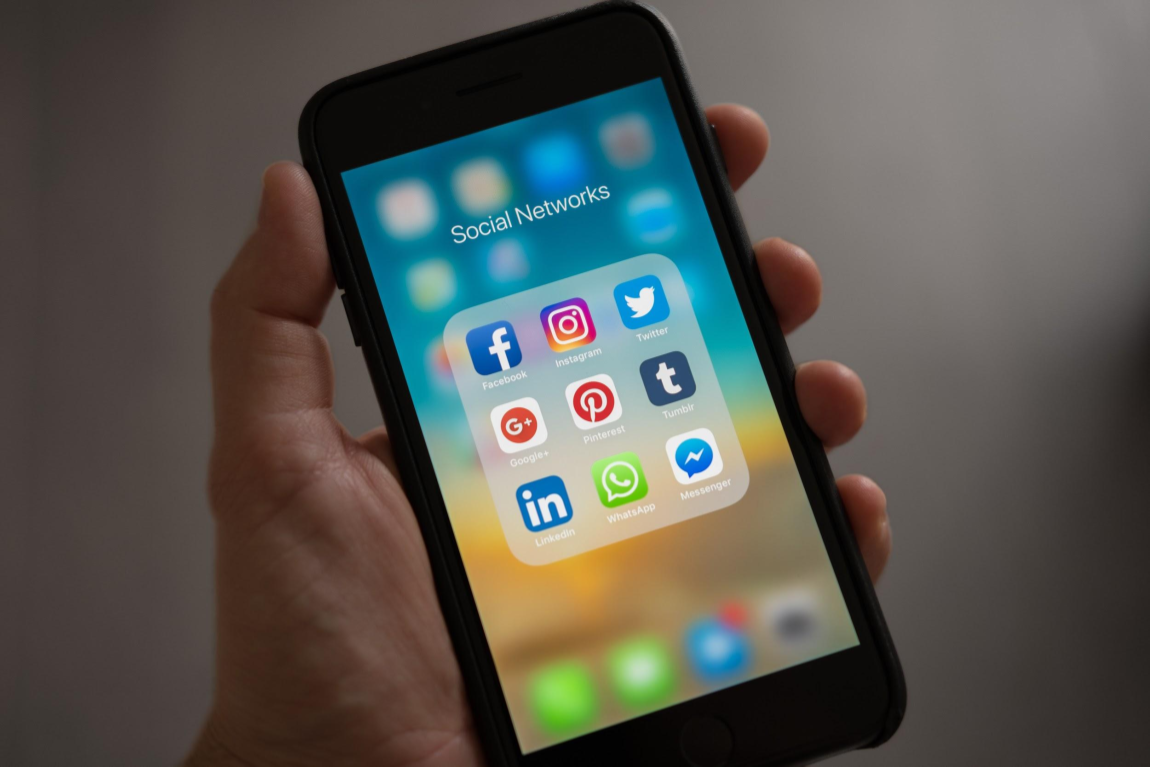by MGB2B

While you might not realize it, LinkedIn for B2B marketing is nothing to sneeze at. In fact, it’s the most dominant social media channel when it comes to B2B marketing. It offers a unique opportunity for brand promotion and lead generation to an audience whose mind is already on business. That alone should make it a must for B2B marketing strategies. Don’t believe it? According to LinkedIn Marketing Solutions, 80% of B2B marketing leads from social media come through LinkedIn. On top of that, 92% of B2B marketers use this platform. What’s more, LinkedIn is responsible for 46% of all social media traffic to B2B websites.
Now that you understand it’s breadth, here’s three ways LinkedIn can work for you:
1. Your Company Page
First and foremost, let’s talk about your main company page. It heightens brand awareness and legitimacy just by the sheer fact of having one. But the more engaging your page, the better it will perform. Here’s where you can share your company story, showcase your executive branding, and create compelling content that establishes trust, authority, and thought leadership. Company and industry news, videos, tutorials, helpful white papers, and infographics all have a home here. And thanks to easy-to-use analytics, you’ll be able to see what is working (and what isn’t) so you can shift your strategy to be more effective.
2. LinkedIn Groups
One of the biggest benefits of LinkedIn for B2B marketing is the group feature. In 2013, 81% of users belonged to at least one group, and that number has only grown. Groups are the epitome of targeted marketing: instead of just having a generic public page, you can develop a niche closed community that connects with individuals with shared interests. Not only are they a great place to foster brand recognition, you can position your company as an industry leader within different sectors. Better yet, groups are a great place to get a micro view of marketing trends and monitor the needs of those you are targeting.
3. LinkedIn Pulse
Pulse gives users daily news related to their specific interests. So if your brand posts about your industry frequently, your stories have a higher chance of being featured on a potential lead’s Pulse feed. This means keeping a regular schedule of consistent, meaningful posts is extremely valuable for increasing your reach – and leads.
Off all the social networks, LinkedIn is the best place to interact professionally with your target audience. Keep in mind, it’s not a place to sell or make deals. Instead, it’s a place to establish your brand as a trustworthy and reputable resource. When you use LinkedIn for B2B marketing, you can attract higher quality leads, create targeted connections, and continually reinforce relationships with prospects and current customers. But like all social media (and marketing for that matter), to succeed, you have to have a strategy in place. If you need help getting off the ground, start by reading this piece on content strategy – or by giving us call.
Continue Reading
by MGB2B

The Myth: We Don’t Need To Hire A Dedicated Social Media Person
The Truth: Social Media Success Requires A Dedicated Role
One of the best things about social media is its simplicity. My father uses Twitter, and he can barely forward an email. But this is where the simplicity ends. Using social media as a marketing channel is far more complex. If you’re thinking of having a staff member add social media to their existing duties, reconsider. There are solid gains to be made in the social landscape, but worthwhile results require dedicated effort. In short, good social media isn’t as simple as it looks.
First, Understand Why Social Media Presence is Vital
81% of the US population used social media in 2017, according to statistica. It is estimated that there were 2.34 billion users of social media last year. You can bet that folks who make purchase decisions on B2B brands were among them. If you have a dedicated person at the helm, the potential for increasing traffic and reaching new customers is limitless. A well-developed social strategy can humanize your brand and offer an efficient way for customers to engage with you. On top of this, market insights are made easy: consumer traffic and responses to certain posts show you what’s working and what isn’t in a very quick and digestible way.
Social Media is More Than Posting
Ok, so you know why you need it. But the benefits mentioned above don’t come from haphazard posting or “spraying and praying.” Here’s what a typical social media expert accomplishes:
Content strategies and calendars.
If you don’t have a firm set of goals, success can elude you. Having someone to create and update a specialized content strategy to push the brand forward and maintain its momentum is vital to your social media presence. This means strategizing a variety of blogs, white papers, infographics, and videos that all work towards the same end goal. On top of this, keeping a detailed schedule of uploads and posts provides a way to monitor the work so far and inform future ideas. This ensures nothing is being oversaturated, underutilized, or ignore. (Want to learn more about content strategies? Read this.)
Content creation and curation.
A social media person is responsible for figuring out what to post and when. This alone is fairly time-consuming. Even simple tasks like picking the right picture to accompany your blog take forethought. Your social media staff member is also responsible for directing what kind of content is needed and who will be creating it. In many cases, they’ll be jumping in and creating the content themselves. (You also need someone dedicated to creating great content, but that’s another topic altogether).
Analysis and Monitoring.
Social media moves fast. It’s hard to anyalize the data on the fly if it’s not your primary responsiblity. Your staff can respond to feedback and trends in real time, nudge what’s working and drop what isn’t. Real-time monitoring not only informs your current campaigns but the ones you haven’t designed yet.
Adjusts with the landscape.
Social media is constantly changing. Your social media specialist can identify the landscape and potential changes. It’s difficult to predict trends and adjust content on the fly if it isn’t your primary job.
This alone is a pretty big job description. And remember, there are always hiccups and social PR bumps along the way. It’s pretty hard to do it all if it’s considered an add-on to another job. In short, (and like everything else), if you want to do it well, you have to do it right.
Have questions about social media? Contact us. We’re here to help.
Continue Reading
by MGB2B

Using Buyer Personas to Cut Marketing Waste
Is there a lot of waste in your company’s advertising? That is often the case for B2B brands. Your audience can flip past ads. They can scroll past banners. When you produce a general marketing campaign with one message to a broad audience, it can be overlooked by a good portion of the audience. Instead, arm yourself with targeted Buyer Personas. A Buyer Persona is a detailed profile of your ideal buyer. It usually includes demographic and psychographic information, media consumption, and purchasing behavior. Often, it’s necessary to do extensive market research (both qualitative and quantitative) to establish an effective Buyer Persona. And in most cases, you’ll want to create multiple buyer personas to target different verticals or decision makers.
Take a Look at These Key Areas to Investigate When Developing Buyer Personas:
- What Are the Demographics?
Before you dive into needs and wants, it’s crucial to establish a demographic profile for your Buyer Persona. Get to know the typical age, education, job title, and industry of your buyers. These all play a major role in who they are as a B2B decision maker.
- What Are Your Buyers’ Goals?
It’s important to gain an understanding of what your Buyer Personas are looking to achieve on the job and what they need in order to be successful. The information you gather will help you to better understand how to help them achieve those goals. And you can create marketing content with these goals in mind.
- What Do They Value Most?
Once you know their goals, you’ll want to identify the key attributes that drive a buyer’s decision-making process. Ease of use. Support. Price. Identify what your buyers value most. Then, you can use it to develop products and services they need and messaging that resonates.
- What Are Their Pain Points?
This is one of the most important areas to identify for your Buyer Personas because it gets to the root of the benefit you can provide. When you know pain points, you can work to help your buyers overcome their most difficult challenges. Pain points are a great way to fuel both product and content development. They inspire fodder for blog posts, white papers, videos – you name it.
- How Do They Feel About Your Competitors?
It’s not only critical to understand the demographic and psychographic profiles of your Buyer Personas. You also need to understand their relationship with your competitors. To get started, ask questions that help define your competitive landscape and identify holes in the marketplace that your brand can fill.
- How Do They Like to Be Reached?
Lastly, once you’ve created detailed profiles of your Buyer Personas, it’s important to know the best way to reach them. Do they prefer face-to-face contact with your sales reps? Or is a monthly email their preferred means of staying updated? Do they like videos? Or follow brands they like on Facebook? With so many means of communication, you can get a leg up by allowing your Buyer Personas to identify where they are and what they’re looking for. It’s the best way to make sure your message gets through the clutter and directly to your target.
It may seem like a lengthy process to develop Buyer Personas. However, the reward of a streamlined, highly targeted marketing program is well worth it. You’ll see increased engagement and return on investment, as well as happier customers. After all, even B2B buyers like to receive helpful hints and content designed specifically for them, as opposed to a mass-market campaign that casts a wider net. And happy customers make for a happy brand.
Continue Reading


